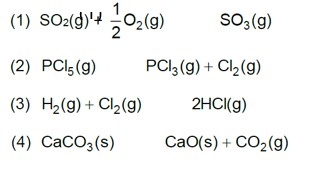Match List – I with List – II:
List – I List – II
(a) Negatively charged sol (I) Fe2O3. xH2O
(b) Macromolecular colloid (II) CdS sol
(c) Positively charged sol (III) Starch
(d) Cheese (IV) a gel
Choose the correct answer from the options given below
Match List – I with List – II:
List – I List – II
(a) Negatively charged sol (I) Fe2O3. xH2O
(b) Macromolecular colloid (II) CdS sol
(c) Positively charged sol (III) Starch
(d) Cheese (IV) a gel
Choose the correct answer from the options given below
Option 1 -
(A)-(III), (B)-(III), (C)-(IV), (D)-(I)
Option 2 -
(A)-(II), (B)-(I), (C)-(III), (D)- (IV)
Option 3 -
(A)-(II), (B)-(III), (C)-(I), (D)-(IV)
Option 4 -
(A)-(I),(B)-(III), (C)-(II), (D)-(IV)
-
1 Answer
-
Correct Option - 3
Detailed Solution:Metallic suphides i.e CdS are negatively charged colloidal solution.
Starch colloid is macro molecular colloidal solution.
Fe2O3. xH2O sol is positively charged colloidal solution.
Cheese is an example of gel.
Similar Questions for you
0.01 M NaOH,
M = 1 * 10-2

pOH = 2
pH = 2
Kp = Kc (RT)Dng
36 * 10–2 = Kc (0.0821 * 300)–1
Kc = 0.36 * 0.0821 * 300 = 8.86 » 9
A(g) ->B(g) + (g)
Initial moles n 0 0
Eqb. moles n(1 – a) na
total moles =
Eqb. pressure
On increasing pressure, equilibrium moves in that direction where number of gaseous moles decreases.
Taking an Exam? Selecting a College?
Get authentic answers from experts, students and alumni that you won't find anywhere else
Sign Up on ShikshaOn Shiksha, get access to
- 65k Colleges
- 1.2k Exams
- 679k Reviews
- 1800k Answers


